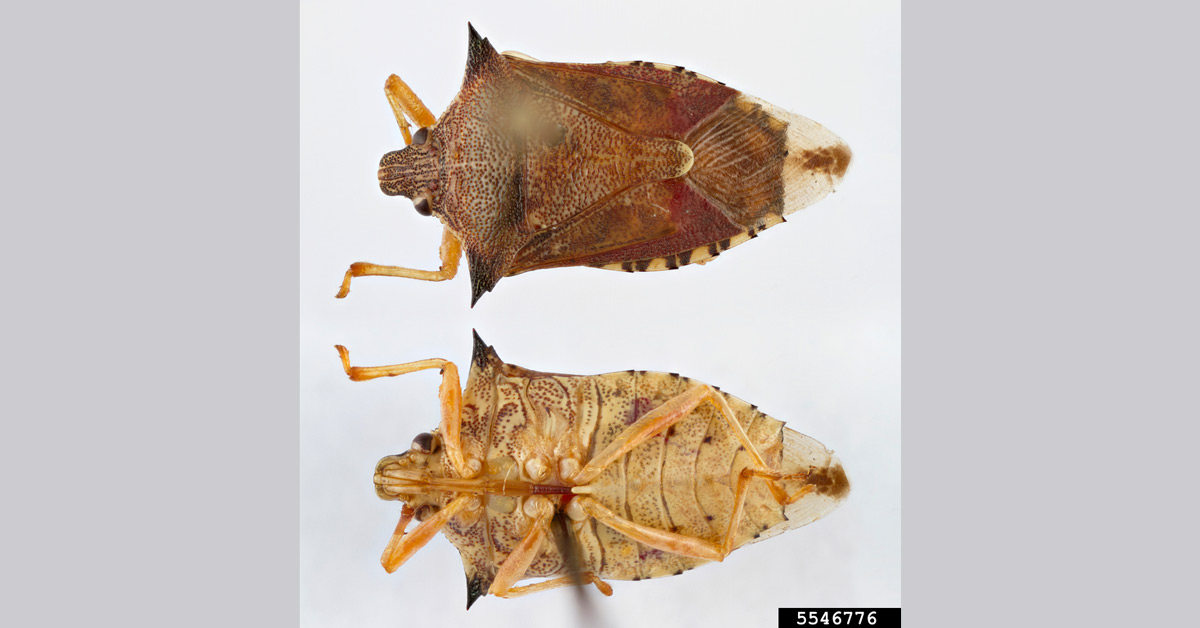
New study shows unanticipated negative impact of Bt insecticidal crop on beneficial insect. Report: Claire Robinson
A study from 2017 reported that most GM Bt insecticidal maize varieties lost their ability to control the fall armyworm pest within three years of introduction in Brazil, as the pest became resistant to the Bt insecticidal toxin in the plants. The same pattern of rapidly evolved pest resistance has been found in Argentina, Puerto Rico, and the United States.
Now a newly published open access study shows another mechanism through which Bt insecticidal maize crops may be failing. The Bt toxins ("Cry proteins") in Bt maize ingested by the fall armyworm pest are transferred to a natural enemy of the armyworm, the predatory stink bug Podisus nigrispinus (Dallas) – where they cause harmful changes in the predator insect's midgut cells. The authors believe that these changes could negatively impact the predator insects' fitness.
The harmful changes are only visible under the microscope and thus are defined as histopathological changes. In the Bt toxin-exposed insects, the lining of the gut was irregular, with signs of degeneration. Many abnormalities in cell structure were seen, compared with the control group not exposed to Bt toxins. These findings suggest that the digestive enzymes of Podisus nigrispinus do not fully degrade Bt toxins, contrary to frequent claims that these proteins degrade rapidly in the gastrointestinal tract.
Studies in pigs have also found Bt toxin proteins in the lower part of the gastrointestinal tract of animals fed Bt maize, confirming that these toxins are far more stable in the gut than was predicted by industry experiments performed to support regulatory approval of Bt crops.
Bt toxins not specific to pests
The findings of the new study also confirm previous findings that Bt toxins do not just harm the target insect pests but also harm non-target insects, including those that are beneficial to farmers because they eat insect pests. Helpful predator insects that have been shown to suffer harm from Bt toxins include lacewings and ladybirds.
In some cases these harmful effects are "prey-mediated" – in other words, the toxic effects occur indirectly, when the predator insect feeds on insect prey that has in turn fed on Bt toxin-containing plants. The new study adds to the evidence showing prey-mediated harm from GM Bt crops.
Many studies show harmful effects of Bt crops on mammals fed a diet containing them – see GMO Myths and Truths for summaries.
Implications of the new study
The new study is the latest in a long line of studies that raise questions about the effects of eating GM Bt crops on the guts of humans and other animals. But it also shows that the ecological effects of GM Bt crops stretch beyond the specific target pests to impact natural predators of those pests, affecting the sustainability of farming – something that is not given sufficient attention in regulatory assessments of these crops.
Image of predatory stink bug: Hanna Royals, Museum Collections: Heteroptera, USDA APHIS PPQ, Bugwood.org
https://www.insectimages.org/browse/subthumb.cfm?sub=80262&fam=366
---
Spodoptera frugiperda (Noctuidae) fed on transgenic maize can transfer Bt proteins to Podisus nigrispinus (Pentatomidae)
Michael Willian Rocha de Souza, Marcus Alvarenga Soares, José Eduardo Serrão, Marinalva Martins dos Santos, Caique Menezes de Abreu, Márcia Regina da Costa
Entomology - Sci. agric. (Piracicaba, Braz.) 79(4), 2022
https://doi.org/10.1590/1678-992X-2021-0044
ABSTRACT
An important concern with the use of genetically modified plants expressing Bacillus thuringiensis (Bt) insecticidal toxins is the deleterious effect on non-target organisms. The predatory stink bug Podisus nigrispinus (Dallas) is used in biological control programs and may be exposed to Bt toxins. This study evaluated the indirect effects of different Cry proteins on P. nigrispinus with the prey Spodoptera frugiperda, fed on simple or pyramided Bt maize genotypes.
The experiment was carried out in a completely randomized design with three treatments: i) Isohybrid (not Bt), ii) Herculex (transgenic maize encoding Cry1F protein) and iii) PowerCore (pyramidal transgenic maize encoding the Cry1F, Cry1A.105, and Cry2Ab2 proteins), which were used to feed S. frugiperda for 48 h. The caterpillars were used as prey by P. nigrispinus females. We evaluated the presence of Cry proteins, consumed prey biomass (predation), oviposition period, number of postures, number of eggs, number of eggs per posture, number of nymphs, egg viability, embryonic period, female longevity and development, and survival rates of immature.
The results show that different Cry proteins move through the food chain of P. nigrispinus and provide evidence that the ingestion of three different proteins does not lead to unexpected synergistic effects. However, Cry toxins promoted histopathological changes in midgut cells of P. nigrispinus.
Conclusion
Conserving natural enemies to improve pest control is a challenge in integrated pest management programs. Thus, the use of Bt plants needs to be evaluated due to its possible adverse effects on non-target organisms. Our results show that different Cry proteins move through the P. nigrispinus food chain. Besides, the study provides evidence that exposure period of P. nigrispinus females to S. frugiperda that consumed maize leaves expressing Bt toxins has no synergistic effects on the non-target species investigated. However, the Cry1F, Cry1A.105, and Cry2Ab2 toxins consumed by S. frugiperda cause histopathological changes in the midgut of P. nigrispinus (3rd trophic level), which may compromise the predator fitness.